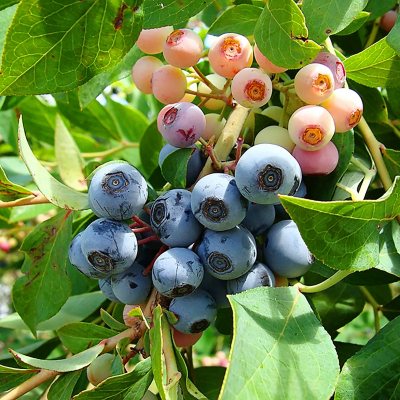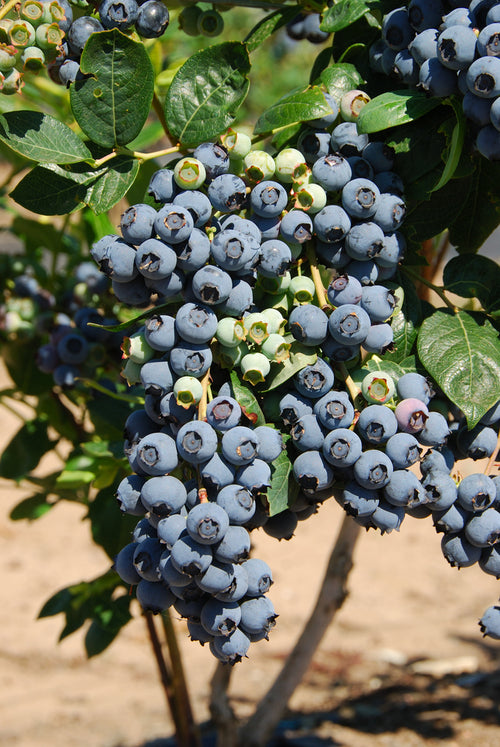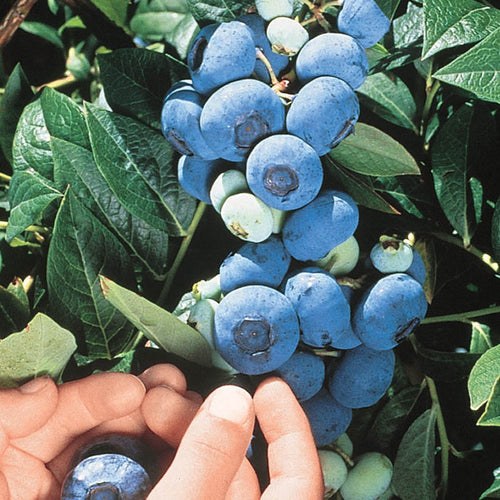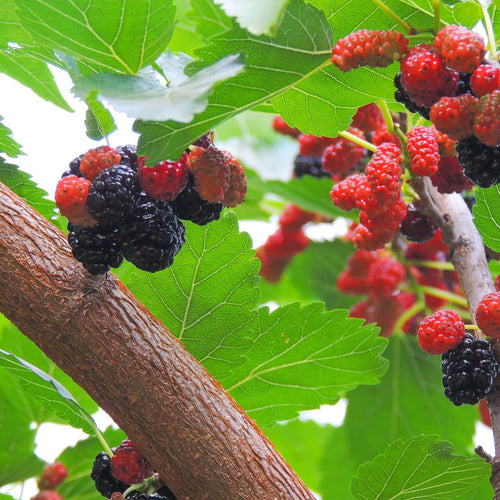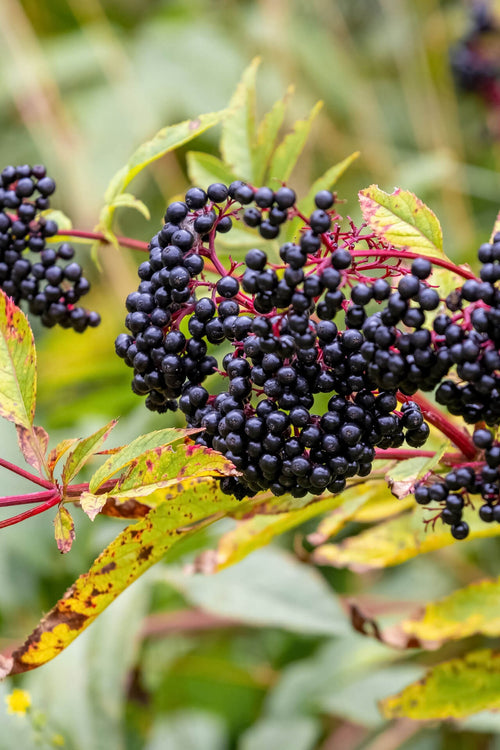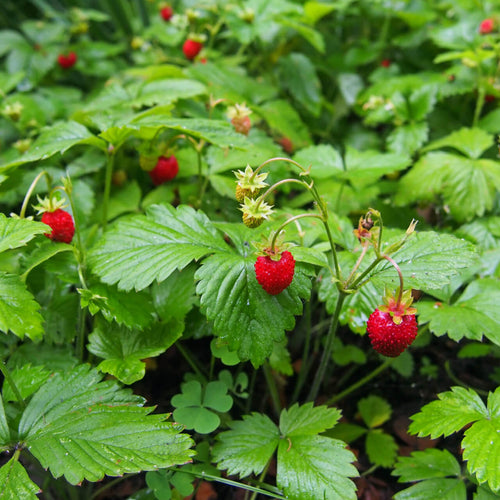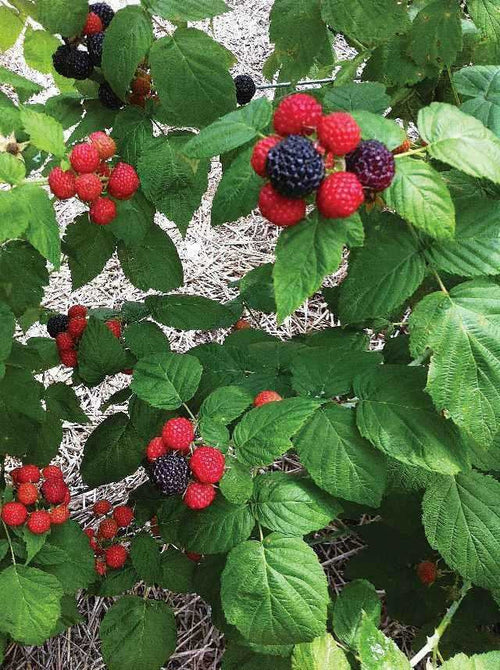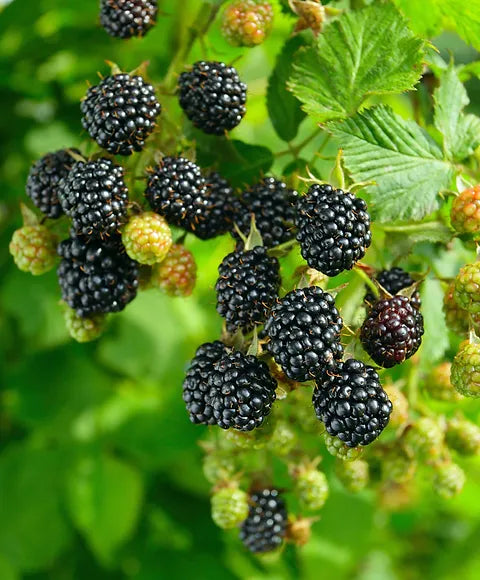Growing Blueberry in Your Garden Can be Truly Rewarding
What can be more rewarding than using your garden-grown blueberries in the kitchen? The blueberry plant produces delicious fruits in berries that are used widely in making jams, jellies, syrups, cakes, etc.
Blueberry is a perennial flowering plant that produces small dark-blue berries. Many varieties of blueberries are available in the market for home gardens and commercial purposes. They are majorly categorized into highbush plants and lowbush plants. You can choose from the many varieties depending upon the soil and climate of the area.
Growing blueberries can be a little challenging as they have specific requirements for healthy growth. They require acidic and well-drained soil along with a sunny location. Soil that is rich in organic matter is best suited for blueberry plants. Avoid planting blueberries near large trees that can overshadow the plant and block sunlight.
Plant the small blueberry plants in late April or early May. Planting the shrub in a big enough hole to accommodate all the roots would be best. Blueberries can last for many years, so taking care of the plant and maintaining it well to yield maximum fruit is advisable. You must remove the blossoms during the first few years to encourage growth. That is essential to strengthen and prepare the plant for the coming years. Removing the flowers will make the roots and stems stronger. You might have to use fertilizers if the plant is not growing correctly. The foliage color indicates that the plant needs additional fertilizers for proper growth.
Take care of plants and cover them with a net when fruits appear, as birds and pests can damage the fruits. Harvest time will benefit you when you pick baskets full of fresh blueberries from your home garden.
Growing and Caring for Blueberries
Blueberries are delicious and highly nutritious fruits that have gained popularity in home gardens and commercial farms. Cultivating blueberry plants can be a rewarding experience, offering fresh, flavorful berries and adding beauty to your garden landscape.
This guide will delve into the intricacies of growing and caring for blueberry plants, covering everything from selecting suitable cultivars to providing optimal growing conditions and managing common pests and diseases.
Selecting Suitable Blueberry Varieties For Growing Blueberry Plants
Before you start cultivating blueberries, choosing the most suitable varieties that match your climate and preferences is essential. Blueberries are available in different types, including highbush, lowbush, and rabbiteye varieties. Your selection should be based on factors such as your intended use, soil type, and climate.
Highbush varieties are the most common blueberries cultivated in North America. They are ideal for commercial production and fresh consumption. Some popular highbush varieties include 'Bluecrop,' 'Duke,' and 'Northland.' These varieties produce large-sized berries, and they are relatively easy to grow. They require well-draining soils and regular irrigation.
Rabbiteye varieties are commonly grown in the southeastern United States. They flourish in warm and moist climates and are known for their flavorful berries. Some well-known rabbiteye varieties include 'Patriot' and 'Tifblue.' These varieties require acidic soils and regular pruning to maintain their shape and productivity.
Lowbush varieties are small, spreading plants that are ideal for colder climates. They are commonly grown in Maine and Canada and are often used in wild blueberry production. Some of the popular lowbush varieties include 'Wild Blue.' Unlike highbush and rabbiteye varieties, lowbush blueberries require minimal pruning and are typically grown in the wild without irrigation.

Selecting the appropriate blueberry varieties is crucial in blueberry cultivation. By considering your intended use, soil type, and climate, you can choose the best varieties that will thrive in your region and provide you with a bountiful harvest.
Site Selection and Preparation
Blueberries flourish in acidic soil with a pH range between 4.5 and 5.5. Therefore, it's essential to test your soil's pH and amend it accordingly before planting. Select a bright site with well-drained soil for optimal growth. Avoid areas prone to waterlogging, as blueberries can easily root rot in poorly drained soils. Clear the planting site of weeds and debris, and include organic soil such as compost or peat moss to enhance soil structure and fertility.
Planting And Growing Blueberry Plants
If you plan to plant blueberry bushes, it is best to do so in either spring or fall. First, dig a spot double as wide and deep as the plant's root ball. This permits the roots to extend out properly and establish a strong foundation for growth. Once the hole is ready, gently loosen the roots and place the blueberry bush in the center of the hole. Ensure that the plant crown sits level with the soil surface and that the roots are well covered by soil.
After planting, it is essential to water the blueberry bush thoroughly to eliminate any air pockets around the roots and settle the soil. This will also help the plant to establish itself faster. It is recommended to space highbush varieties 4 to 6 feet apart and lowbush varieties 2 to 3 feet apart. This ensures proper air circulation and plenty of room for growth.
Try to keep the soil damp but not waterlogged and provide enough sunlight for the blueberry bushes to thrive. With delicate care and watch, you can expect a bountiful yield of delicious and nutritious blueberries in no time!
Watering and Fertilizing Blueberry Plants
Consistent moisture is essential for blueberry plants, especially during the growing season and fruit development. Provide approximately 1 to 2 inches of water weekly through rainfall or irrigation. Mulching with organic materials like pine bark or lumber chips can help keep the soil moist and suppress weeds. Fertilize blueberry bushes annually in early spring with a balanced fertilizer formulated for acid-loving plants. Avoid over-fertilization, as excessive nitrogen can lead to vegetative development at the cost of fruit production.
Pruning and Training Blueberry Plants
Pruning is vital for supporting the health and productivity of blueberry bushes. Clear any dead, damaged, or diseased limbs throughout the year to stop the spread of pests and diseases. Additionally, thin out crowded branches to improve air circulation and light penetration into the canopy. Highbush blueberries benefit from annual pruning to remove old wood and encourage the growth of new, fruit-bearing shoots. Rabbiteye varieties require less pruning but may benefit from occasional thinning and shaping.

Pest and Disease Management For Blueberry Plants
Blueberry plants are exposed to different pests and diseases, including blueberry maggot, mummy berry, and powdery mildew. Watch your plants regularly for symptoms of pest infestation or disease symptoms, such as yellowing leaves, wilting, or abnormal growth. Implement cultural practices like sanitation, mulching, and adequate spacing to minimize pest and disease pressure. In severe cases, chemical controls such as insecticides or fungicides may be necessary, but always follow label instructions and observe pre-harvest intervals to ensure food safety.
Harvesting and Storage Of Blueberry Plants
Blueberries generally ripen from late spring to early summer, depending on the variety and location. Harvest berries when they are fully ripe, plump, and have developed their characteristic blue color. Gently grasp the berries and pull them from the stem, not crushing or bruising the fruit. Blueberries are best enjoyed fresh but can also be frozen for long-term storage. Spread washed and dried berries in a single layer on a sheet and freeze until firm, then move them to airtight receptacles or freezer bags for storage.
Growing blueberry plants can be a gratifying endeavor, offering a bounty of delicious fruit and enhancing the beauty of your garden landscape. By selecting suitable varieties, providing optimal growing conditions, and enforcing beneficial maintenance and care practices, you can cultivate healthy and productive blueberry bushes for years. Whether you're a beginner gardener or a professional horticulturist, the joys of growing and harvesting your blueberries are well worth the effort invested in their cultivation.
TN Nurseries best-selling berry plants:
Shop Our Fruit and Berry Shrubs
Visit our online shop for a wide selection of plants and trees, or come say hi at our store location in Tennessee!
We offer fast shipping nationwide so you can start transforming your garden today!
If you have any questions about berries or if you have any other plant needs, don’t hesitate to contact us at customerservice@tennesseewholesalenursery.com, we’d love to hear from you!

